When measuring what scientists call the “bite force” of an animal, there is both agreement and disagreement among those conducting the measurements.
The Animals with the Strongest Bite Force in the World
- Top 10: Hyena – 1000 PSI
- Top 9: Grizzly Bear – 900 to 1,200 PSI
- Top 8: Polar Bear – 1,200 PSI
- Top 7: Gorilla – 1,300 PSI
- Top 6: Jaguar – 1,500 PSI
- Top 5: Hippopotamus – 1,800 PSI
- Top 4: American Alligator – 2,000 to 3,700 PSI
- Top 3: Great White Shark – 4,000 PSI
- Top 2: Nile Crocodile – 5,000 PSI
- Top 1: Orca – 19,000 PSI – Bite force 117 times stronger than that of a human
Bite force is defined as the force exerted when the teeth and jaws come together to bite and chew food. It is measured in pounds per square inch (PSI), reflecting the force an animal exerts on its prey.
Factors such as jaw size, tooth shape, and of course, the size and shape of the prey/food all influence bite force measurements.
For example, humans have evolved to consume a mixed diet (both plant and meat), and the meat we eat is typically cooked or cut into smaller pieces. Therefore, the bite/chewing force measured in humans is 162 PSI.
Meanwhile, the animals on this list have the strongest bite forces and need to catch and consume prey live, so their bite forces have evolved accordingly. Due to certain discrepancies among scientists measuring bite force, most bite force measurements for these animals are estimates.
Worldatlas shares a list of the 10 animals with the strongest bite force in the world (among currently existing species), with the species ranked Top 1 having a bite force 117 times stronger than that of a human – which species is it?
Top 10: Hyena – 1000 PSI
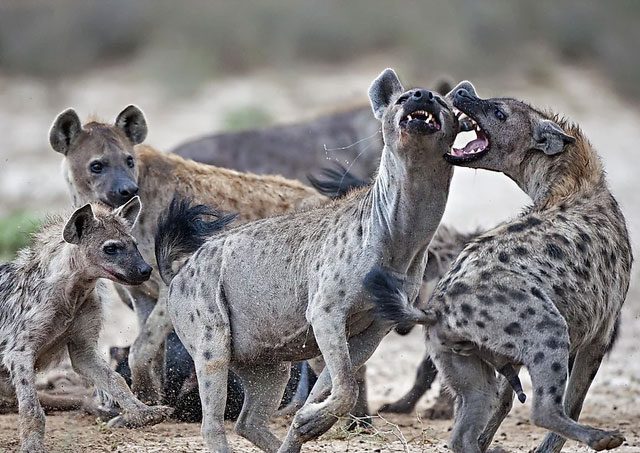
Hyenas can bite through the bone marrow of their prey.
Interestingly, although they resemble members of the Dog family, hyenas are more closely related to the Cat family – and they are not actually members of either family. They are unique enough to have their own family – the Hyaenidae.
Hyenas inhabit the sub-Saharan regions of Africa and parts of Asia and possess an astonishing bite force relative to their size.
The estimated bite force of 1,100 PSI is designed for them to bite into the bone marrow of their prey. Their teeth and digestive system have evolved to chew and digest bones.
Hyenas have a stronger bite force than wolves and domestic dogs (the largest among them being around 700 PSI). In comparison to members of the Cat family, hyenas have a stronger bite than most lion species – whose bite force is approximately 650 PSI, ranging up to 1000 PSI.
Top 9: Grizzly Bear – 900 to 1,200 PSI

The bite force of the grizzly bear is strong enough to crush a bowling ball with little effort.
Grizzly bears live in North America. They can weigh up to 317 kg and their bite force ranges from 900 to 1,200 PSI. Unlike polar bears, grizzly bears are not strictly carnivorous.
As omnivores, grizzly bears require a diet that includes both plants and animals. They enjoy eating berries, roots, grasses, and fish. In fact, grizzly bears are believed to consume nearly 85% of a plant-based diet. They also eat deer and moose if they can catch them, though these prey are harder to hunt.
When hunting, they use their strong bite, razor-sharp claws, and large body size to hold onto larger prey. Since they are not as agile as other hunting animals, grizzly bears often target sick or injured animals.
Before hibernating in winter, grizzly bears need to eat enough food to survive through the entire freezing season. They can consume up to 40 kg of food daily in the weeks leading up to hibernation.
Although their bite force is weaker than that of polar bears, it is still strong enough to crush a bowling ball with little effort.
Top 8: Polar Bear – 1,200 PSI
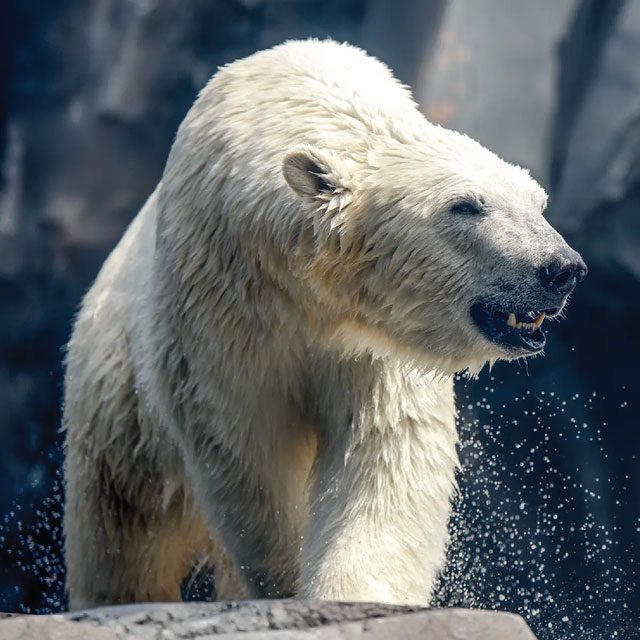
Polar bears are top predators in the Arctic marine ecosystem.
Polar bears live in the Arctic Circle, where they struggle to survive in one of the harshest environments on Earth. They are the top predators in the Arctic marine ecosystem, primarily hunting seals.
Their bite force reaches over 1,200 PSI, making them the strongest in the bear family. This may partly be due to the fact that they sometimes go without food for 3 to 4 months and need to stock up on food when it is plentiful in the Arctic.
To keep warm in the extreme cold of the Arctic, polar bears need to consume and digest a significant amount of fat. Their stomachs are extremely efficient at extracting the necessary nutrients (mainly fat and protein) to survive in such a frigid environment.
Due to climate change, the hunting grounds of polar bears are becoming increasingly inaccessible to them.
Top 7: Gorilla – 1,300 PSI
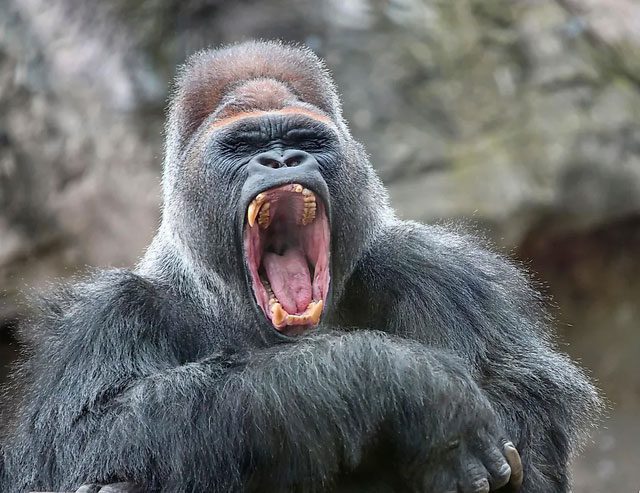
Gorillas use their powerful bites to strip bark in search of ants and larvae.
Despite their strong bite, gorillas are primarily herbivorous. Their habitat is found in the tropical forests of equatorial Africa, and they primarily live on the ground. They use their strong bites to strip bark to find ants and larvae.
Interestingly, gorillas do not need to consume much protein in their diet because their digestive system produces protein from the live bacteria within them. Although largely herbivorous, gorillas can grow up to 200 kg and can be as tall as an adult human.
Unfortunately, gorilla populations are declining due to climate change and industrialization. Their habitats are often encroached upon by expanding cities. According to the latest statistics, only 1,063 mountain gorillas remain in the world, and they are considered endangered by the World Wildlife Federation.
Top 6: Jaguar – 1,500 PSI
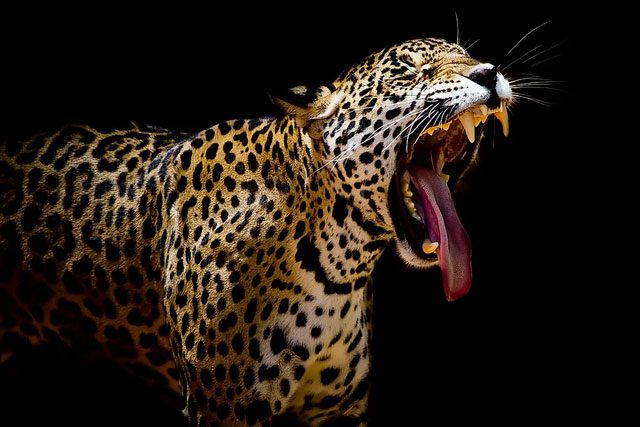
Jaguars are incredibly fast and can reach speeds of nearly 130 km/h.
Jaguars inhabit Central and South America, as well as the southwestern United States. They are large cats that can grow up to 1.8 meters in length and weigh nearly 100 kg. They are incredibly fast and can reach speeds of almost 130 km/h.
With a bite force reaching 1,500 PSI combined with that dizzying speed, jaguars can hunt animals that are four times their size. Their name, “Jaguar,” is derived from the native word “Yaguar”, meaning “to kill with a single leap.”
The strong bite force of jaguars allows them to bite through the tough shell of turtles, the “armored skin” of crocodiles, and crush the skulls of any animals they can catch.
They are opportunistic carnivores, feeding on a variety of different animals. Jaguars will eat snakes, lizards, large and small mammals, and even fish.
Like many other animals, deforestation and climate change threaten the territory and population of jaguars.
Top 5: Hippopotamus – 1,800 PSI
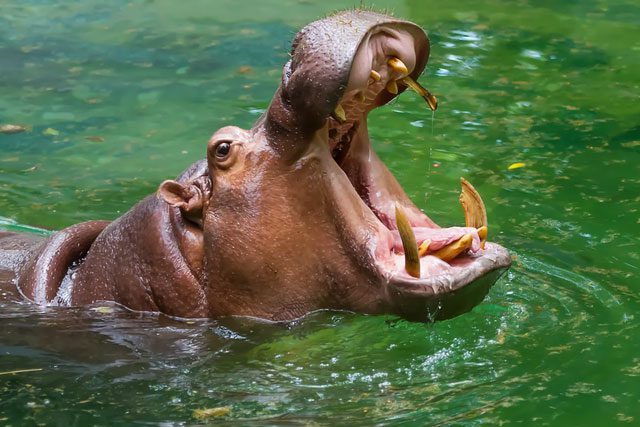
Despite having a strong bite, hippopotamuses are herbivorous.
The hippopotamus ranks fifth in the list of animals with the strongest bite force in the world. They are the third-largest land mammals alive on Earth and are semi-aquatic, commonly found in sub-Saharan Africa. The term “hippopotamus” can be roughly translated to “river horse” in Greek.
Despite having a strong bite, hippos are herbivorous animals. Their bite has evolved to help them fend off top predators and fight other hippos for dominance within their groups.
Although primarily herbivorous, hippos are considered dangerous to humans and can be quite aggressive. Weighing up to 3.6 tons, hippos can move relatively quickly for their size, reaching speeds of up to 50 km/h, and are believed to be very difficult to tame or train.
Like many other species on this list, hippos face the risk of extinction due to habitat loss, with the World Wildlife Fund estimating their population at only about 110,000 individuals.
Top 4: American Alligator – 2,000 to 3,700 PSI
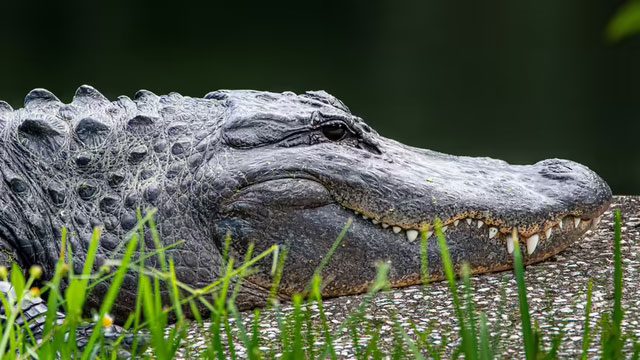
The Alligator species typically inhabits freshwater areas.
With a bite force exceeding 2,000 PSI, the American alligator (a short-snouted crocodile) is the next animal on this list. They are found in parts of the United States, Mexico, and China.
As opportunistic predators, American alligators patiently wait for the chance to attack their prey. From snakes, fish, and turtles to mammals and amphibians, they are not picky eaters.
Often referred to as “living fossils,” they have changed little over the past 100 million years.
The Alligator species usually reside in freshwater regions. Although they have a special gland in their tongue to excrete salt from their bodies, this mechanism is not as effective as that of the Nile crocodile.
Top 3: Great White Shark – 4,000 PSI
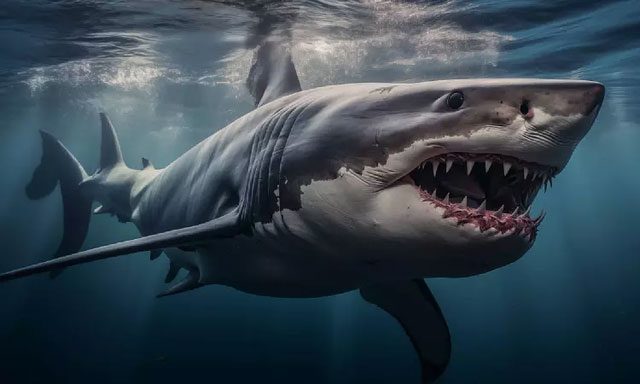
The great white shark can live up to 70 years if it survives.
The great white shark uses an estimated bite force of 4,000 PSI to hunt marine mammals such as seals and sea lions. Young great whites often prey on smaller targets like fish.
This carnivorous species is found in coastal waters of the major oceans worldwide. Although many young great white sharks do not survive past infancy, those that do can live up to 70 years and grow up to 6 meters in length.
With nearly 300 teeth, sharks do not chew their food. They use their powerful bite to tear prey into manageable pieces, swallowing each chunk whole.
The World Wildlife Fund lists the great white shark as a vulnerable species due to climate change and years of hunting for their fins and teeth as trophies.
Top 2: Nile Crocodile – 5,000 PSI
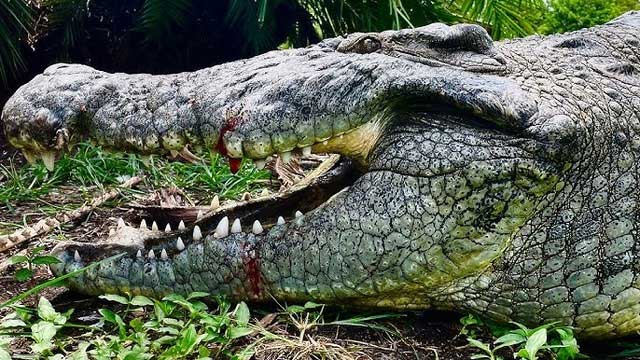
Like other crocodile species, the Nile crocodile can live up to 70 years.
The Nile crocodile (English: Nile Crocodile, a long-snouted crocodile) has a bite force ranging from 3,700 to 5,000 PSI. Although smaller than some other crocodile species, they possess the strongest bite among all reptiles. Like other crocodiles, the Nile crocodile can live up to 70 years.
Nile crocodiles are native to sub-Saharan Africa, primarily inhabiting freshwater environments, although they can survive in brackish and saltwater conditions. Although they are generally smaller than saltwater crocodiles, the largest Nile crocodile ever recorded weighed over 1 ton.
The Nile crocodile has a stronger bite than its larger relatives, which is why it is listed separately among the top 10 animals with the strongest bites in the world.
Nile crocodiles can inhabit freshwater, brackish, and saltwater thanks to a special gland in their tongue that can excrete salt from their bodies.
Top 1: Orca – 19,000 PSI – Bite Force 117 Times Stronger than Humans

The orca is a social predator.
The orca is the reason why Nile crocodiles and saltwater crocodiles are included in this list due to their “unmatched” bite force, which is believed to surpass that of all other species.
Orcas are social predators that hunt and consume a wide variety of marine life, including fish, squid, dolphins, seals, sea lions, and other whales. As apex predators, orcas sit at the top of their food chain, with no natural enemies.
Every day, they need to consume about 4% of their total body weight. Females can weigh up to 4 tons and live up to 50 years. Meanwhile, the largest mature males ever found in the wild have exceeded 10 meters in length and weighed nearly 10 tons.
Although referred to as killer whales, orcas are not members of the whale family; they are the largest members of the dolphin family (Delphinidae) and inhabit nearly every ocean on Earth. Orcas are a protected species and are at risk of extinction in some parts of the world due to climate change and increasingly limited access to sufficient food sources.



















































